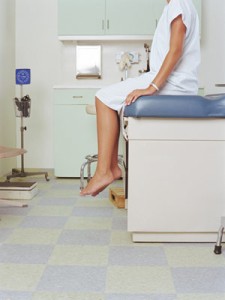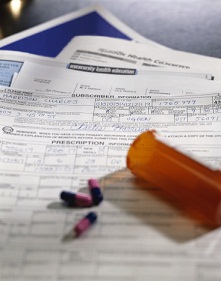Taking a step back from the facts, facts, facts this week I am going to share with a few (what I hope will be) helpful tips for your patient or loved one’s scheduled doctors appointments.
 It is never fun to go see doctor (unless your doctor also happens to moonlight as a stand-up-comedian.) But, when your loved one if afflicted with a progressive and degenerative disease, it quickly becomes a necessity to preserve continuity of treatment and ultimately, to prong life itself.
It is never fun to go see doctor (unless your doctor also happens to moonlight as a stand-up-comedian.) But, when your loved one if afflicted with a progressive and degenerative disease, it quickly becomes a necessity to preserve continuity of treatment and ultimately, to prong life itself.
It is useful to combine your insurance cards with your State Driver’s License and to keep these both together in your wallet/purse. An ID lanyard that hangs around your neck allows you to openly wear the identifying documents, must like the ID document you may find pinned to your Physician’s shirt/hanging around his/her neck. Hospitals use these highly visible ID lanyards to easily identify the person wearing them and can easily validate their ability to come and go.
In filling out the usual Patient Admission Form for any new Physician, you will always be asked for a list of the medications your patient, or partner, is taking on a daily routine basis, or as needed on a specific schedule/occasional basis. It is a huge time saver to produce an updated Patient List of Medications and this document also helps any new Physician to make informed decisions should any new circumstances arise. This is one of the most useful documents that you can produce; it will be used continuously.
I also learned to carry about 6 – 10 copies of the Patient List of Medications in my loved one’s medical folder. I was sure to update these copies every time there was a change in medication or dosing. I would advise you to do the same.
To see an actual Patient Medical List, please visit Exhibit 1a and Exhibit 1b in Cancer Caregiver Roles: What You Need to Know
Normal procedure of an office appointment begins with check-in and then weigh-in, blood pressure and the oxygenation  measurements. As a Caregiving Partner, it is useful to keep a a log of your loved one’s weight to serve as a marker for how well the patient’s nutritional needs are being met. I would also suggest keeping track of the blood pressure measurements, as an indicator of overall stress effects and well-being. These measurements are usually entered into the patient’s Medical Records — but they are not given to the patient or the Caregiving unless they have been requested.
measurements. As a Caregiving Partner, it is useful to keep a a log of your loved one’s weight to serve as a marker for how well the patient’s nutritional needs are being met. I would also suggest keeping track of the blood pressure measurements, as an indicator of overall stress effects and well-being. These measurements are usually entered into the patient’s Medical Records — but they are not given to the patient or the Caregiving unless they have been requested.
My last word of advice: it is good practice to request a patient copy of the results from any diagnostic imaging procedures and blood draws. These will be helpful for you (as a caregiver) to aid in understanding how the patient is progressing, and it will be useful if your patient has to go see a different specialist or Oncologist. [See Exhibit 2a and 2b in Cancer Caregiver Roles: What You Need to Know]
Any helpful tips or suggestions you would like to add to this list?
